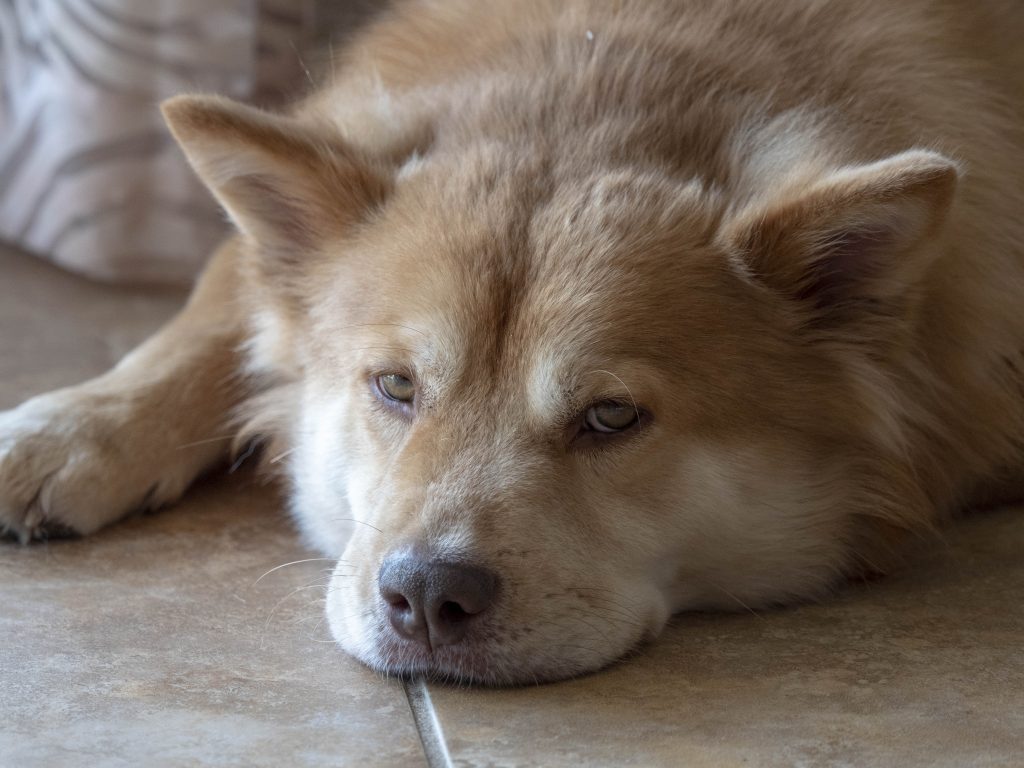WHY WON’T MY DOG DRINK WATER?
Water is an essential component of the body and is also very important for specific body processes like the circulation of blood, digestion, and removal of waste; thus, being dehydrated is dangerous not only for humans but canines.
So what could be the reason?
Could it be that your dog is sick or unhappy?
Or could it be that you are overreacting?
HOW MUCH WATER DOES YOUR DOG NEED?
You need to know the quantity of water your dog should take in daily before you trouble yourself with why your dog is refusing to drink water. The amount of water your dogs need can be influenced by several factors like its size, and how much exercise it gets. Luckily, there is a rule you can adopt. Dogs usually need about one fluid ounce per pound of bodyweight.
It’s normal and healthy if your dog drinks slightly less than the recommended water intake, especially if your dog has been less active of recent. However, if your dog is still drinking less than the recommended amount after crunching the numbers, then it’s possible something is wrong with your pet.
If you are still not sure whether your dog is taking the recommended amount of water, then you need to check for other signs or symptoms of dehydration, such as lethargy, dry mouth, sunken eyes, and depression.
WHY DOGS STOP DRINKING WATER?
Often, an injury inside or near the dog’s mouth could be a reason your dog refuses to drink water. Dogs are big chewing fans, especially tough objects to satisfy their chew urge. So, it’s very possible for wood chunks, rock or plastic to end up grinding around the inside of your dog’s mouth, inflicting small injuries that can cause pain when they want to drink. Also, your pet may not want to drink because of damaged teeth.
Anxiety and nerves can also lead to loss of appetite and thirst in pets. These emotions are sometimes connected to a change in lifestyle or environments, including unfamiliar faces in the home or new pets. Your dog can also be anxious if a family member is absent. In most scenarios, dogs quickly adapt to these changes by themselves, developing desires to drink and eat after a few days. Furthermore, susceptible dogs may require additional assistance to cool off and get well.
Your dog may be less willing to drink water due to changes in the water. Your dog can make a big deal over a minor difference in smell or taste of water. For instance, your dog might not be willing to drink city water because it’s more comfortable or used to well water. And if this is what you are facing, you can help your dog familiarize with the change by mixing some bottled water into their dish.
The next step to take an irrespective look on why your dog stopped drinking water is to visit your local vet. They can tell what’s wrong with your pet after examining it and recommend how to resolve your dog’s drinking problem. It’s important you visit a vet if your pet has an injury in the mouth that’s refusing to heal on time. Even if you feel your dog will get back to normal after a short while, visiting a vet is still a good idea.
So focus on keeping your pet hydrated till you see a vet.
PERSUADING YOUR DOG TO DRINK WATER
Luckily for you, there are some techniques you can apply to keep your pet hydrated when it refuses to drink water.
First, you can add some fresh water to your pet’s food dish. Most dogs are more interested in eating so they can get water into their system through this method.
You could get a Perpetual Well an Automatic dog water bowl to ensure your dog has constant access to a fresh, filtered bowl of water.
Another way to keep your dog hydrated is by giving them some watery treats. Surprisingly, a lot of dogs love ice cubes. You can also give them fruits like seedless watermelon, blueberries, and apples; these fruits contain substantial amounts of water too. Veggies like carrots and cucumbers are also good alternatives. Note that not all vegetables and fruits are healthy for your pets. Just so you know, onions and grapes are really poisonous to dogs.
You can also persuade your dog to stay hydrated by preparing a broth with a small amount of chicken or beef. Not all dogs have the power to say no to or refuse a tasty meal; only a few can – well-disciplined pets. Make sure any meal you prepare for your dog should not contain garlic, onion or any other dangerous ingredients.
The unfortunate thing about this technique is that it will not work if your dog does not have an appetite for food. Do not give up if your dog refuses to eat. Keep offering your dog food, clean water and make sure you see a vet as soon as possible.
MEETING WITH YOUR VETERINARIAN
Your vet can identify why your dog is refusing to drink water. They will also recommend tricks that can restore your dog’s drink habit. Ensure you stick to their advice and provide honest answers to questions asked so they can diagnose the cause accurately and provide an accurate treatment plan.
That’s all! Your best friend should be back in perfect condition within a short period. Furthermore, ensure you keep track of your dog’s drinking and eating habits and if you notice any irregularities, contact your vet as soon as possible.

